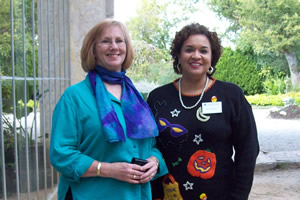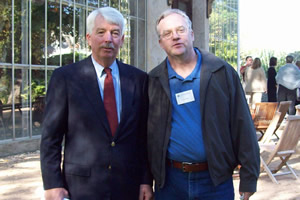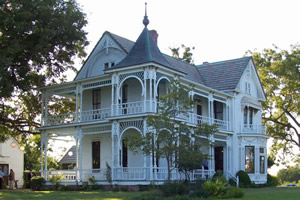
Environmental Factor, December 2008, National Institute of Environmental Health Sciences
Children's Health Symposium Tackles the Built Environment
By Rosemarie Ramos
December 2008




With the help of contributions by platinum sponsor NIEHS and other supporters, the Children’s Environmental Health Institute (CEHI) held its Fifth Biennial Scientific Symposium on October 30 – 31 in Austin, Texas. The focus of this year’s meeting was “Blueprint for Children’s Health and the Built Environment.” What emerged from the CEHI (http://www.cehi.org/aboutus.html)![]() symposium was a consensus that sustainable building and urban planning decisions must include an essential consideration of the long-term impact on human health and development.
symposium was a consensus that sustainable building and urban planning decisions must include an essential consideration of the long-term impact on human health and development.
As in previous years, the 2008 symposium brought together stakeholders from various disciplines to identify persistent and emerging children’s environmental health issues. Speakers emphasized that this responsibility needs to be shared by stakeholders from the scientific, public health and non-scientific communities.
The forum featured a number of high-profile environmental public health experts that included Phil Landrigan, M.D., director of the NIEHS-funded Children’s Environmental Health Center at Mt. Sinai School of Medicine; Anila Jacob, M.D., of the Environmental Working Group (EWG); Don Mattison, M.D., senior scientific advisor at the The Eunice Kennedy Shriver National Institute of Child Health and Human Development; and Howard Frumpkin, M.D., Dr.P.H., director of the CDC National Center for Environmental Health.
Presentations included an overview of the current centers funded by the NIH for the National Children’s Study by Mattison, Landrigan, and Donald Dudley, M.D., co-investigator of the National Children’s Study at the University of Texas Health Science Center in at San Antonio. Frumpkin’s presentation offered an historical perspective regarding the human health impact on such conditions as childhood obesity and respiratory disease of urban planning decisions over the last few decades that have failed to promote physical activity and healthy air quality.
Speaking from the perspective of urban planning and building design, John Poretto, former executive vice president for administration and finance at the University of Texas Health Science Center in Houston, and Steve McDowell, architect-owner of BNIM architects of Kansas City, Mo., presented their collaboration on building projects on UT campuses. These projects are now required to undergo a mandatory environmental health impact assessment prior to implementation.
Jacob and renowned neurotoxicologist Steven Gilbert, Ph.D., discussed the critical need to expand the definition and sources of environmental exposures, as well as the importance of assessing the long-term health impact from low-dose chronic exposures to lead and mercury. Jacob presented the latest project of the EWG titled “10 Americans” (http://www.ewg.org/node/27201)![]() — highlighting the fact that no environmental exposure is as critical as those occurring in the intrauterine environment.
— highlighting the fact that no environmental exposure is as critical as those occurring in the intrauterine environment.
Fittingly, the venue for this year’s event was the historic Barr Mansion, one of the former cotton plantation houses that populated the Blackland Prairie in the 1800’s. Today, the property includes a ballroom facility that serves as a venue for meetings, receptions and weddings. The Barr Mansion boasts of being a certified organic venue serving only organic-certified meats and vegetables, much of it purchased from local growers.
(Rosemarie Ramos, Ph.D., is the health disparities postdoctoral fellow in the Metastasis Group.)
"NIH Announces 2009..." - previous story ![]()
![]() next story - "Sixth Annual Science..."
next story - "Sixth Annual Science..."
December 2008 Cover Page



